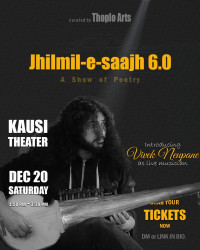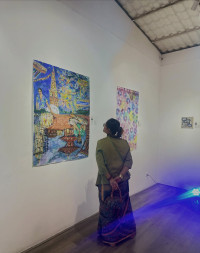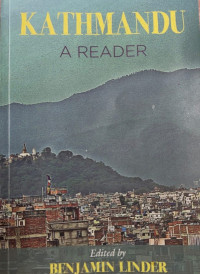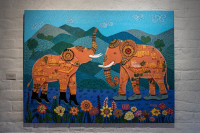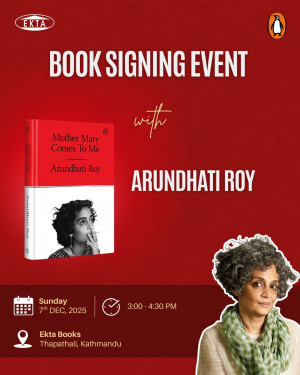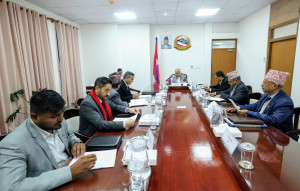Culture & Lifestyle
Nepal is not landlocked, we are land-linked
The author of ‘Unleashing Nepal’, Sujeev Shakya, reflects on the country’s evolving potential, young leadership, and why it’s time to stop thinking small.
Reeva Khanal
Sujeev Shakya is an author, thought leader, and advisor with experience spanning leadership, economic development, and organisational transformation. He founded Beed Management and chairs the Nepal Economic Forum, a leading think tank. Shakya is widely recognised for his ability to contextualise global ideas within Nepal’s unique socio-economic landscape.
In this conversation with the Post’s Reeva Khanal, Shakya reflects on Nepal’s transformation journey, the importance of mindset shifts, and how his multifaceted roles have shaped his vision for a more connected Nepal.
In ‘Unleashing the Vajra’, you discuss Nepal’s potential to thrive between two giants—India and China. What do you believe is holding us back from stepping into that strategic role, and how can we break that inertia?
There are two things. Firstly, we continuously think that we are a small geopolitical pond. We continuously equate ourselves with Bhutan, which has 800,000 people, and the state of Sikkim, which has half a million people, but we have a population of 30 million people. We never look at our size from the opportunity lens.
The second point is that we tend to view our neighbouring giants as challenges to manage instead of recognising them as two countries full of opportunities. We are not land-locked but are land-linked between these two countries, but this approach is rarely taken. To thrive, we need to move on to an opportunity perspective.
You often discuss the need for a mindset shift in Nepal—from scarcity thinking to abundance thinking. What are the most visible signs that this shift is, or isn’t, happening?
We are seeing these shifts happening across Nepal, especially regarding agriculture. People are moving from talking about famines to having enough food, which is a big shift.
We have moved into a phase where, when it comes to bare necessities, be it clothing or shelter, we have the choice of building better houses, doing the interiors differently, and so on. From scarcity, we now have variety. So, the shift is already happening, but we are not thinking seriously about it.
Having worked closely with leaders across sectors, what qualities define a ‘next-generation’ Nepali leader?
The next generation of leaders should think globally, seeing the world as their workplace or area of influence rather than having the myopic, conservative perspectives of previous generations. That is what will drive future growth and prosperity.
You’ve worn many hats: author, consultant, economic analyst, and mentor. Across all those experiences, what has consistently surprised you about how change happens in Nepal?
Nepal is changing at a fast pace. That continues to surprise me. Sitting in Kathmandu, talking to the usual sceptics, you tend to think nothing is moving. But as you go out, you will suddenly see big changes. Be it coffee shops mushrooming, be it more small and medium-sized enterprises, more educational institutions, more health care centres. So the pace at which all these changes take place can surprise people, and continues to surprise me.
Many of your writings blend global frameworks with Nepali realities. How do you ensure that global ideas aren’t just imported, but translated into something meaningful here?
It is about taking global thinking into granular levels of implementation. So, for instance, if we are talking about the safety of buildings, then it is to ensure that we follow global safety standards. But that can be done in traditional houses, with wood in a traditional style, or homes built with local resources and traditional bricks. The mindset has to be global, but the activities can be very regional.
Similarly, if you are producing a local food or pickle for export, it will follow all global protocols; whether it be in packaging or disclosure of nutritional facts. This makes it a Nepali item of global standards. That’s how you blend a global framework with Nepali realities.
In an age where many young people are drifting away from reading, especially long-form books, what would you say to them—not just as an author, but as someone invested in ideas and transformation?
In our time, consuming content was just books and newspapers, and then it came to television. But now you have multiple ways in which you can consume content. It's like food. There are multiple food outlets with different types of cuisine. Similarly, they have different content available.
I’d tell young people that it is about how you balance the consumption of content, and how you ensure that you are exposed to all its forms. At times, a book may have great things for you to engage with. At times, it could be long-form or a podcast. Other times, it could just be a tweet posted by someone, a post on Instagram, a snippet of a larger video that has been shared around. So, there are different ways to consume content. Rather than saying this or that, it has to be a blend of multiple forms of content, of which books and long-form are definitely important.
Sujeev Shakya’s book recommendations
Aja Ramita Chha
Author: Indra Bahadur Rai
Publisher : Sajha Prakashan
Year: 1964
This is a beautiful book with lively characters—it helped my own Nepali writing.
India Unbound
Author: Gurcharan Das
Publisher: Penguin Books
Year: 2000
Gurcharan Das also inspired me to write ‘Unleashing Nepal.’
The Book of Joy
Author: Dalai Lama and others
Publisher: Avery
Year: 2016
It is an uplifting read. What I found most inspiring is how it explores human connection.
Atomic Habits
Author: James Clear
Publisher: Penguin Random House
Year: 2018
It explains so well why small and consistent actions matter. We often focus on grand ideas, but transformation happens through tiny changes.
Sugata Saurabha
Author: Chittadhar Hridaya
Publisher: Shambhala Publications
Year: 1947
This book explores the life and teachings of the Buddha, originally written in the Newa language. The writing is thoughtful and evocative.




 7.12°C Kathmandu
7.12°C Kathmandu

